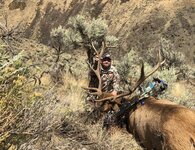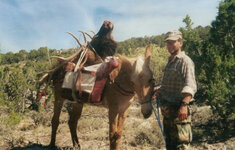swNEhunter
Lil-Rokslider
- Joined
- Jan 2, 2015
- Messages
- 140
"North Facing Slopes" is a pretty common phrase for elk bedding. What about hunting the south side of a 13,500' mountain where there isn't any true north faces? How should I spend my time archery hunting this type of area? Do the elk seek out shady cuts during the day, or does shade not matter as much for bedding? Is closer to timberline better than not? I'd really appreciate some advice as to how you all would approach hunting an area like this.


